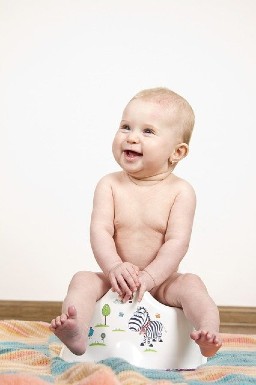
I’ve been asked by some of the nursery staff to write a blog on potty training this week as it’s something that comes up often with parents and as a mum of a two and a half year old boy, this subject is very close to my heart!
Firstly, every child is different and therefore there is no set time a child should be potty trained however, I would suggest that doing it before 18 months is rather fruitless as their muscles aren’t developed enough. But anytime after this, you can start thinking about it.
Signs that your child may be ready for potty training.
*They are old enough to have bladder control –usually at the age of 2 yrs and upwards.
* They have an awareness of when they are doing a wee or having a poo.
* They show an interest in the potty or the toilet
* They may be dry for a couple of hours during the day
* You are able to tell when they are doing a bowel movement by their squatting or grunting noise.
* They let you know when they want their nappy changing because they are wet and uncomfortable.
* Because they say they want to pee and let you know in advance.
How to start.
*Many parents wait until the summer months to start training as they can leave their little one with less clothes on and if the weather is nice, they can be outside with no nappies on and if they do have an accident, it is easier to clear up!
*Consider the timing of the training, for example, if you’re about to move home or your toddler is about to start a new nursery, these probably wouldn’t be good times to start training due to physical or emotional upheaval.
*It’s a good idea to keep the potty in the bathroom. If you have a downstairs toilet too, you could keep one there as well so they can get to the potty easily from wherever they are.
*Encourage your child to sit on the potty after meals because digesting food often leads to the urge to do a poo (NHS 2017).
Having a book to look at or toys to play with may also help them to sit for longer.
*If your child goes for a poo at a similar time each day, consider taking their nappy off at this time of the day and suggest they use the potty. Equally, as soon as you see that your child knows when they are going to wee, encourage them to use the potty.
*If they have an accident at any time, never reprimand them, just clean it up and wait until next time. It’s important that you don’t make any fuss if they have an accident as this could make them feel anxious.
If your child does do a wee or a poo, give them with lots of praise. If your child is old enough to understand, you could even use a reward/ sticker chart.
What to wear
The good thing about modern day nappies is that they are very absorbent and so they protect the child’s skin by drawing the urine away from their skin. That said, this is not particularly helpful when potty training as you really want your child to know when they have done that wee so it may be an idea to use ‘pull up’ nappies as they are less absorbent and they are more like pants so easier to wear during training. You could also use a small piece of kitchen roll in their pants as this will let them know when they are wet (NHS 2017).
Using the toilet
Some children skip the potty all together and use a clip on toilet seat that goes over the regular seat. It is a good idea to use a step to rest their feet on as this will make it easier for them to do a poo.
*If you have a boy, it is important to encourage your child to sit on the toilet every day to poo as once they started to wee standing up, it’s easy to forget about pooing and this could lead to constipation.
Managing Expectations
As mentioned before, all children are different and toilet training is not something that is done in one day! You may be very lucky and your child may step out of nappies and be completely trained inside of 2 weeks but for many, it can take weeks or months for toilet training to work as well as the odd relapse if your toddler becomes poorly.
Also, continuity is key so if you are trying to train your little one at home, you may wish to ask the nursery to continue with what you have been doing and vice versa if the nursery are using the toilet or the potty, to avoid confusion, it would be sensible to follow it on at home.
